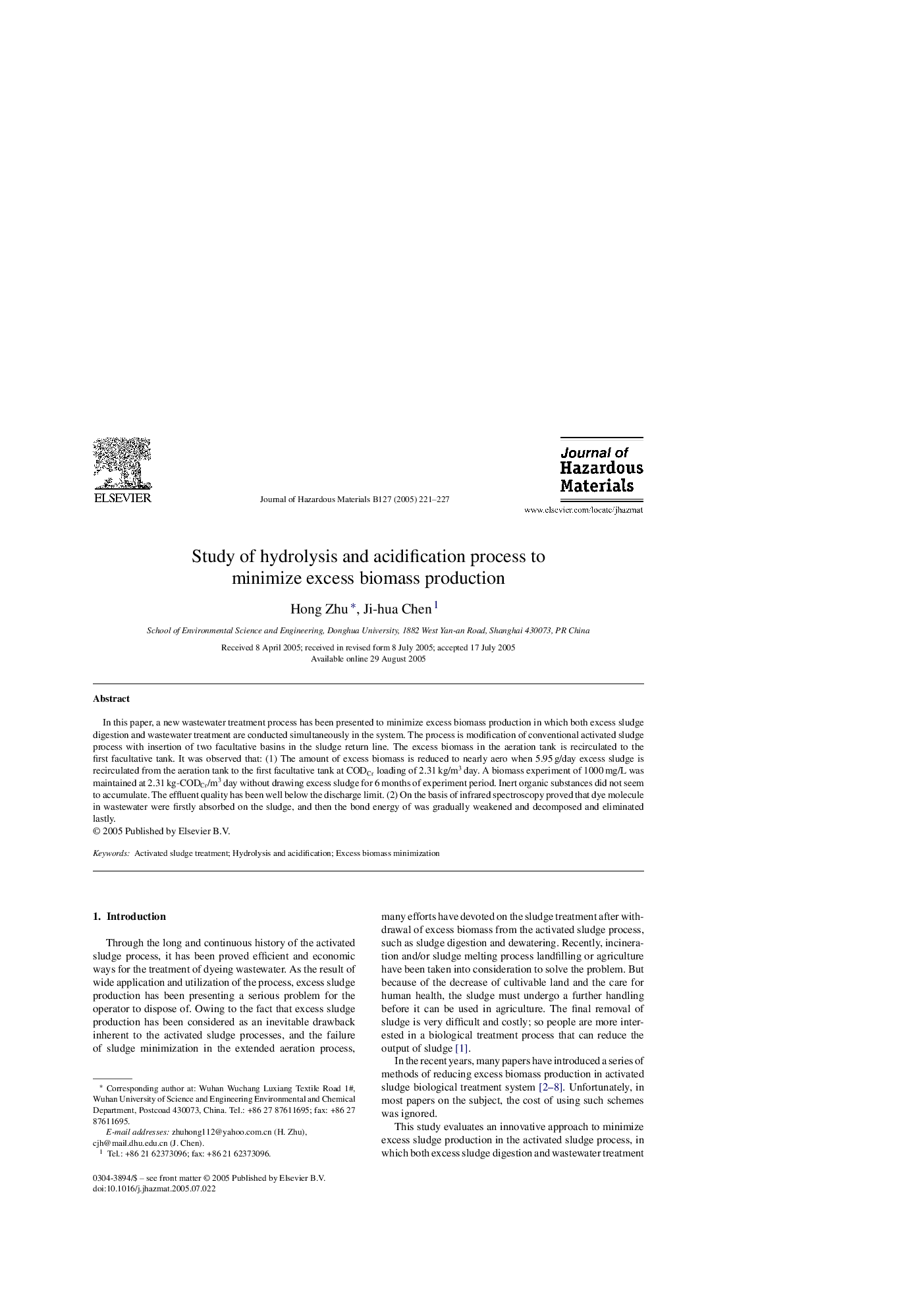| Article ID | Journal | Published Year | Pages | File Type |
|---|---|---|---|---|
| 9674079 | Journal of Hazardous Materials | 2005 | 7 Pages |
Abstract
In this paper, a new wastewater treatment process has been presented to minimize excess biomass production in which both excess sludge digestion and wastewater treatment are conducted simultaneously in the system. The process is modification of conventional activated sludge process with insertion of two facultative basins in the sludge return line. The excess biomass in the aeration tank is recirculated to the first facultative tank. It was observed that: (1) The amount of excess biomass is reduced to nearly aero when 5.95Â g/day excess sludge is recirculated from the aeration tank to the first facultative tank at CODCr loading of 2.31Â kg/m3Â day. A biomass experiment of 1000Â mg/L was maintained at 2.31Â kg-CODCr/m3Â day without drawing excess sludge for 6 months of experiment period. Inert organic substances did not seem to accumulate. The effluent quality has been well below the discharge limit. (2) On the basis of infrared spectroscopy proved that dye molecule in wastewater were firstly absorbed on the sludge, and then the bond energy of was gradually weakened and decomposed and eliminated lastly.
Keywords
Related Topics
Physical Sciences and Engineering
Chemical Engineering
Chemical Health and Safety
Authors
Hong Zhu, Ji-hua Chen,
